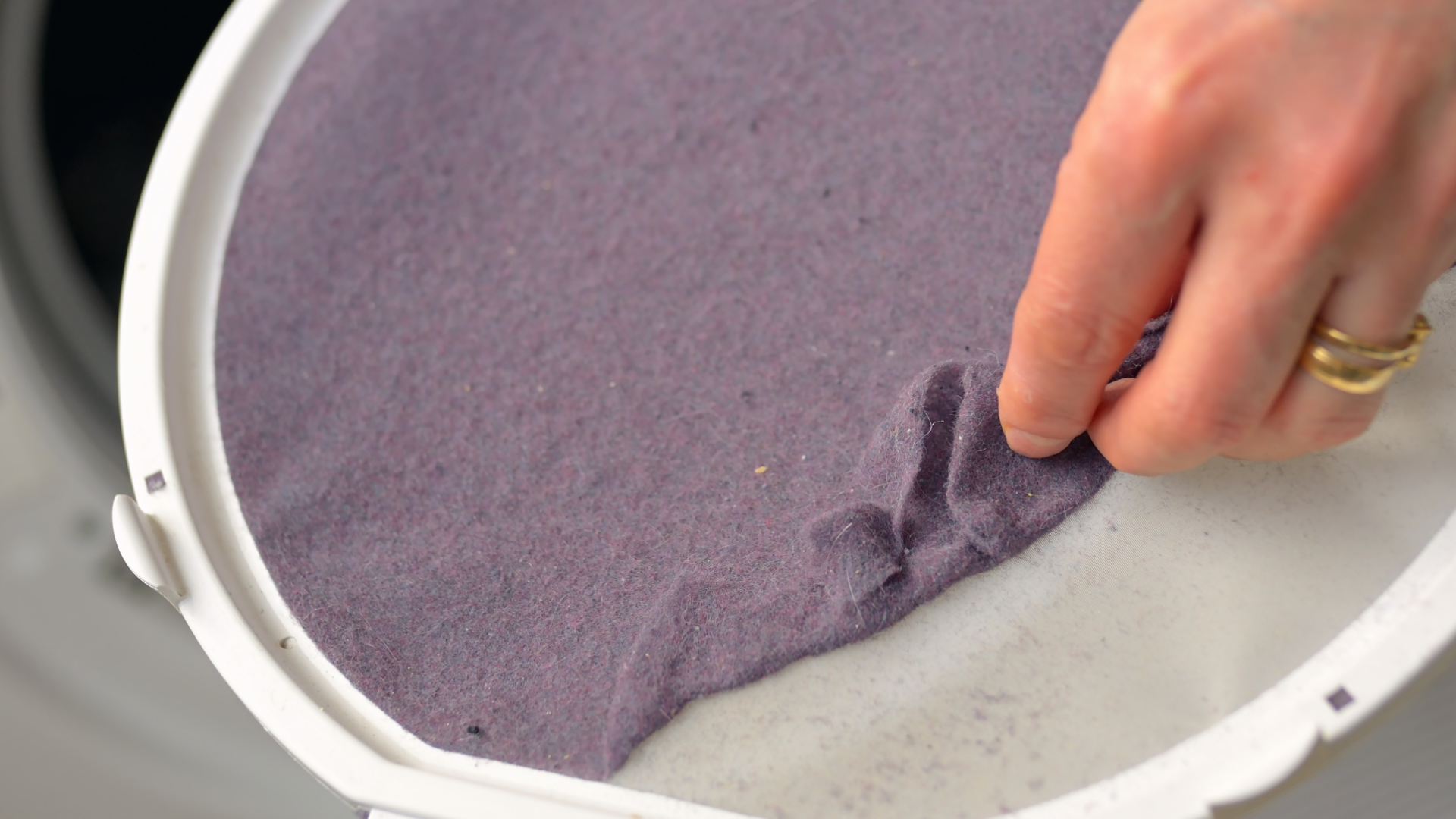
A noisy dryer can be quite alarming, especially if the drum is not being properly supported. Several parts can become worn over time and cause the issue. A blocked fan or parts that have become loose can also cause the dryer to make unusual noises.
To diagnose and fix these issues, the dryer cabinet will likely need to be taken off the dryer. In most cases, the dryer drum will also need to be removed. However, with the right tools and care being taken, fixing a noisy dryer is not as difficult as it may seem. Always unplug the dryer before removing the cabinet.
1. Drum Rollers and Axles: Squeaky or Thumping Noise
One of the most common causes of unusual dryer noise is worn-out rollers. The axles that the rollers spin on can also become damaged. The rollers support the dryer drum as it turns. When the rollers are slightly damaged, they are more likely to make a squeaky noise. As they completely wear out, the effect on the dryer drum causes a loud thumping noise.
Some dryer models have two rollers at the back of the dryer, while others have two at the front and two at the back. The rollers have bearings in them, which can wear on the axles. When you examine the rollers, make sure that they spin freely. If the rollers have completely worn out, they are likely to have also damaged the axles.
If you disassemble the dryer and remove the drive belt, you should be able to turn the drum manually. Listen to see if the noise is caused by the rollers or axles. You should also be able to feel if the rollers are on tight and see if they are damaged. If the rollers or axles are damaged, you should replace them.
2. Drive Belt: Thumping Noise
Another common cause of dryer noise is that the drive belt is worn out or broken. The drive belt is part of the pulley system that rotates the dryer drum. If it is damaged, it cannot properly turn the drum and will likely make a loud thumping noise.
The drive belt is relatively easy to remove and replace. Open up the dryer and examine the dryer drive belt. The drive belt can be found wrapped around the dryer drum, threaded around the idler pulley, and looped over the drive shaft. Finding belt fragments inside the dryer when you examine the drive belt is a good indication it needs to be replaced.
3. Idler Pulley: Squeaky Noise
The idler pulley, or dryer pulley, allows the drive belt to operate smoothly by keeping tension on the drum belt to prevent slippage when the dryer has a load in it. The idler pulley can wear out over time because of friction and its high rotation speeds. Initially, a faulty idler pulley will make a loud squeaky noise, but it can progress to making a thumping or scraping sound.
To inspect the idler pulley, you will need to remove the dryer cabinet. The idler pulley is located by the motor pulley where the drive belt runs around it and the motor pulley. Once you have taken the drive belt off the idler pulley, you can manually turn the pulley to see if it causes a squeaking noise.
4. Blower Wheel: Rumbling Noise
The blower wheel circulates air in the dryer drum and removes moisture by blowing it out through the rear exhaust vent. The blower wheel can be become unbalanced, loose, or blocked with lint or other objects. If this happens, it can cause a loud rumbling or thumping sound.
On most dryers, the blower wheel will keep turning a bit longer after the dryer is turned off. Therefore, you may be able to diagnose the problem by turning off the dryer and listening to see if the noise continues.
Depending on the model, the blower wheel can be found behind the front or rear panel, usually inside the blower wheel housing. The plastic blower wheel is either clamped or threaded onto the motor shaft. You should be able to turn the blower wheel manually, and it should turn the motor and drum. If you discover a problem with the blower wheel, replace it.
5. Drum Glides: Grinding Noise
The drum glides support the front of the dryer drum. They are usually small plastic pieces that the drum slides onto as it rotates. If the drum slides become worn, the drum sliding onto them will make a grinding noise. You will need to remove the dryer cabinet to access the drum glides. If they are showing any kind of wear, it is recommended that you replace them. Depending on the model, some glides are secured using rivets, which will need to be drilled out, while others can be unscrewed.
6. Drum Bearing: Squealing/Grinding Noise
Some dryers have a drum bearing that supports the rear of the dryer drum. Depending on the dryer, the bearing can be either a ball and socket or a shaft attached to a sleeve bushing. The drum bearing is located at the rear of the dryer behind the dryer drum. If the drum bearing becomes worn, the drum will rub against the back of the casing and cause a squealing or grinding noise.
To check the drum bearing, the dryer cabinet will need to be removed and the drive belt taken off the dryer drum. If it is difficult to turn the dryer drum and you hear the squealing or grinding noise, this indicates that the drum bearing needs to be replaced.
7. Drive Motor: Multiple Noises
The drive motor turns the dryer drum and blower wheel. The drive motor can make a squealing sound if the bearings need replacing, a humming sound if it has a faulty switch, and a rattling noise if the motor pulley is loose.
To examine the motor, you will need to remove the dryer cabinet and, with most models, the dryer drum. Once you can access the drive motor, you should be able to turn it, and you can check if it is causing unusual noise. The motor can also be checked with a multimeter.

Your Guide to Whirlpool Microwave Replacement Parts

What to Do When Your Kenmore Dryer Won’t Start

How to Resolve the LG Washer LE Error Code

Why Does My Oven Smell Like Gas? Causes and What to Do

Maytag Dryer Not Heating? Here’s How to Fix It

6 Common Reasons Your Speed Queen Dryer Isn’t Heating

8 Reasons Your Samsung Refrigerator Is Not Cooling

9 Most Reliable Washer and Dryer Brands

How to Get Ink out of Your Dryer the Easy Way

Why Is My Fridge Making Noise That Stops When the Door Is Open?

Frigidaire Refrigerator Error Code H1: Causes & Solutions

How to Clean a Dryer Vent Without Moving the Dryer

9 Reasons Your LG Refrigerator Isn’t Cooling

LG Refrigerator Not Making Ice? Here’s What To Do!


